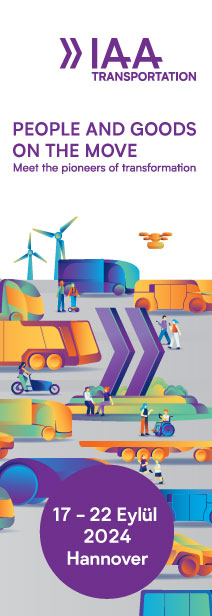Aside from motorhomes, these are characteristics also perfectly suited for commercial purposes such as longer courier routes or minibuses in inter-urban traffic. When it comes to selecting the right powertrain concept, Mercedes-Benz Vans is thus focusing even more on the individual application, making it more customer dependent than ever. Aside from the vehicle technology, a comprehensive evaluation must take into account system weight, charging or refuelling time, range and economy. Classic internal combustion engine, battery-electric drive or forward-looking fuel cell? The Daimler strategy does not provide a dogmatic, ideological answer to this question but instead makes it dependent upon the best possible customer benefits.
Market potential for commercial use
“We will offer every commercial range with an electric drive – starting this year with the eVito and in 2019 with the eSprinter. With these, we will already cover many, but not all, use cases with a zero-local-emissions powertrain. For this reason, we are enhancing our eDrive@VANs strategy with fuel-cell drive, which offers substantial medium-term opportunities, especially in long-distance operation – regardless of whether a fuel-cell vehicle is used as a motorhome or in other commercial applications”, says Volker Mornhinweg, Head of Mercedes-Benz Vans. “The potential of this technology is undisputed. That applies above all to comparatively large vans with a need for long range and short refuelling times. Our analyses demonstrate that the fuel cell can represent a sensible expansion of the powertrain line-up in a number of different applications in both the commercial and private arenas. The Concept Sprinter F-CELL provides an insight today into the possibilities of the future”, continues Mornhinweg.
Daimler is among the pioneers in fuel-cell technology. The most recent development level was presented to the public at the 2017 Frankfurt International Motor Show – the mid-size Mercedes-Benz GLC F-CELL SUV with an innovative combination of fuel cell and battery-electric drive configured as a plug-in hybrid.
Technology showcase with rear-wheel drive
The intelligent interaction of battery and fuel cell drives in the Concept Sprinter F-CELL delivers an electric output of around 147 kW and torque of 350 newton metres. The three tanks in the substructure can store a total of 4.5 kilograms of hydrogen, enough for a range of around 300 kilometres. If a longer range is required for a specific use, the hydrogen tanks integrated into the vehicle underbody can be supplemented by another in the rear. This configuration lifts the range to as much as 500 kilometres. Like the GLC F-CELL, the Concept Sprinter F-CELL also combines innovative fuel cell and battery technology to create a plug-in hybrid. Alongside hydrogen, it can also be “ refuelled” with electricity, raising the range by up to 30 kilometres.
The basis for almost unlimited configuration options
The integration of the hydrogen tank in the substructure, the positioning of the fuel cell at the front of the vehicle and the rear-wheel drive create the basis for maximum interior design freedom. With a standalone energy supply for the living quarters or longer range, the technology showcase makes full use of its merits as a travel companion or, in other applications, as a spacious load carrier.
The structure of the Concept Sprinter F-CELL with rear-wheel drive and a comparably low system weight creates the greatest possible flexibility for additional bodies and conversions or for commercial use with higher payload. The modular system means the fuel cell can establish itself as an alternative to conventional and battery-electric drives for use on shorter routes in as many use cases as possible.










